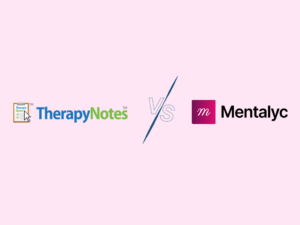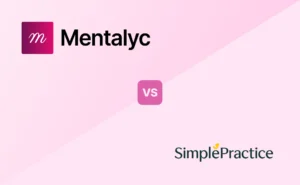As someone who’s worked on both sides of healthcare in the direct practice of psychotherapy as well as performing utilization management functions for healthcare organizations, I’m happy to provide some general guidance around the topics of medical necessity, insurance authorizations, and the relevance of documentation in supporting the clinical treatment needs of clients. Without further ado, let’s dig in.
What is medical necessity?
“Medical necessity” is a term that often includes a specific set of criteria that insurance companies use to determine whether or not they are going to pay for a service. If an insurer deems a service “medically necessary” it means they agree the service is needed and clinically agree to pay for it. However, clinical approval is not a complete guarantee of payment. This is caused by other administrative processes like coding, timeliness, network rules, etc. that could interfere with reimbursement.
Deepening our understanding
Since it’s almost always helpful to draw comparisons, let’s begin with a straightforward example of our physical health. If you needed surgery for a broken arm, your doctor is responsible for documenting what is wrong with your arm (fracture, proven with imaging) and how they’re going to fix it (surgery) in order to make your arm healthy and functional again.
Your insurance company (which employs their own doctors) has to agree with your doctor’s assessment of the situation (fracture, reviewed via imaging and medical record notes) and the procedure (surgery) being medically necessary to improve your health. This is called a “Utilization Review” or “Pre-Authorization” process and must occur before they will agree to pay your doctor’s or hospital bills.

New! Transfer your notes to EHR with a single click. No more copy-pasting.
Not every service requires a utilization review. If the utilization review process is necessary for the service you need, this is when authorization will be built by the insurer. Authorizations can be either approved or denied. If the insurer agrees that medical necessity is met – the authorization gets approved and you (and your doctor) are notified. Again, authorization approval or meeting medical necessity is not a guarantee of claims payment.
If there is a discrepancy in this review process of what intervention is medically necessary for you, the insurer can issue a denial (authorization is denied), and the insurer will usually state the reasons why they don’t agree the requested service is medically necessary.
There can be a variety of reasons why an authorization gets denied by insurance. Again, it could be that medical necessity is not met, insufficient clinical information was submitted, information was not submitted in the required timeframe, etc. These are common reasons why providers generally dislike being subject to the insurance process – in many ways it can limit the autonomy of their clinical judgment and practice.
From the insurer’s viewpoint, though, they want to ensure you are receiving the least invasive and least costly service possible for your needs – which is partly to protect you from being subject to procedures or interventions that you don’t actually need. It’s easy to see how the provider-insurer relationship can become contentious.
Ultimately, insurers and providers have the same goal even if they go about it differently – which is timely access to the correct service to get you healthy again. Those who work in provider or insurer-facing roles understand the benefits of partnership and mutual collaboration whenever possible.
Generally speaking, the more expensive the service or intervention, the more scrutiny an insurance company will use to determine medical necessity. If there is an argument to be made for a lower-cost or less invasive level of care or intervention, the insurer will usually (issue an authorization denial and) recommend an alternative.
For example, perhaps instead of a broken arm, you have a torn ligament or bursitis in your joint. While surgery might be needed, the insurer will likely want to know why this is the correct first-line intervention. Instead of authorizing the surgery, an insurer may instead recommend things like physical therapy, cortisone injections, health coaching, or other lower-cost interventions that could still help promote your healing.
OK, so what does this have to do with psychotherapy?
The same model is also applied to determine whether mental health interventions like psychotherapy are medically necessary.
Because outpatient psychotherapy and counseling are widely regarded as the least restrictive and least invasive professional mental health services available, there is not a lot of scrutiny around authorizing or even promoting these services.
What’s more likely to happen is that insurers will often draw limitations around which providers their members can access (like in-network only or virtual-first recommendations) or how many sessions they will pay for (generally 10-20) in a benefit year before requiring what’s called a “continued stay” or continued authorization review.
Similar to the pre-authorization process, in a continued stay review, it is the therapist’s responsibility to communicate with the insurer about how the medical necessity for psychotherapy continues to be met. While the medical necessity for medical issues tends to be more or less straightforward with the ways we objectively measure physical illness with tests, labs, or imaging – establishing medical necessity for mental health can sometimes be more challenging to objectively measure, quantify, or “prove” in the ways insurers, auditors, or others want to see it documented.
Why wouldn’t therapy be medically necessary?
Insurers are motivated to make sure that what they’re paying for has value to the health of their members (your clients). Therapists need to understand how to speak the insurance love language in order to continue being paid and help their clients access needed care. Unfortunately, sometimes the things we are trained as professionals to value are not always viewed in the same way through the lens of managed care and health insurers.
How do I demonstrate medical necessity in therapy?
Generally, three things inform medical necessity: ICD-10 (DSM-V) diagnosis, impairments as a result of the said diagnosis, and what interventions you’re providing to alleviate symptoms and improve functioning. You can use that one sentence as your guide.
Again, insurance is fixated on improvements in the cheapest way possible. Most insurers understand the value of psychotherapy at least in terms of a low-cost intervention to the general well-being of individuals and especially in comparison to higher-cost services like those in a hospital setting.
Insurance doesn’t necessarily care about which evidence-based treatment you’re using. It is a myth that your notes or documentation have to “look like CBT”, for example. Insurers want to pay (and see documented) the things you need a Master’s or Ph.D. to administer. So what won’t go over well are things like empathy, active listening, reflecting, paraphrasing, support, person-centered interventions, etc.
While you’re respectfully doing Carl Rogers proud, insurers have different ideas of what successful therapy looks like. Words like “psychoeducation,” “coping skills,” “thought frameworks,” “symptom reduction,” “reviewing progress in therapy,” etc. are more along the lines of the nomenclature insurers are looking for.
The best way to navigate medical necessity is by having clear documentation from the very beginning or first session of treatment. It’s extremely difficult to know the nuances of what each insurer wants to see.
However, clinicians are generally successful when they use these three pillars (diagnosis, impairment, and intervention) and language around medically necessary interventions. It can be additionally helpful to document how removing or stopping your interventions will bring the risk of relapse/recidivism or worsened functioning.
We are accustomed to viewing documentation in mental health as a stressor, mystery, or punishment for our profession. Since psychotherapy and counseling can be complex, we assume our documentation must reflect the complexity of our work. Actually, it doesn’t have to be this difficult at all to hit the mark of medical necessity. Your documentation should be broad enough to describe what you’re doing in most sessions and also specific enough to talk about the efficacy of your interventions.
[Sidebar on some common mistakes: Notes that are too lengthy or unnecessarily specific, having too many goals, goals that aren’t directly related to the presenting problem or diagnosis, notes that don’t discuss progress or barriers toward established goals ]
When in doubt about documentation about medical necessity – consult with a supervisor, professional group, or clinician-peer. Those around you who have been doing this work will surely have pointers and insights to help guide you. Also, check in with your clients. How do they feel they are doing? What’s going well? What are they still struggling with? How would they describe what’s happening (or not) in therapy? Use whatever phrasing or terminology makes sense to you.
The point here is to help clients connect the dots with language about how therapy is impacting them. As you talk through this, you’re likely to come up with more language to describe their progress and improve your ability to document in ways that support medical necessity. Lastly, if we’re really struggling to come up with language that validates continued treatment, this could be a sign that tapering down visits or successfully terminating therapy is clinically appropriate. In my clinical training as a counselor, successful termination of therapy was always the end goal to start with.
Most people shouldn’t be in therapy indefinitely, and we also shouldn’t want them to become dependent on the clinical relationship. Of course, in sicker or more chronic populations, this is arguable, and there is room for insurers and providers to work more collaboratively together to support long-term access to therapy for those that need it.
Additional Resources
Attached is a cheat sheet of medical necessity documentation requirements specific to major payers and behavioral healthcare insurers in the US. I hope this document adds value to your understanding and ease of communicating with insurers about medical necessity and demonstrates the value of your services to the improved health of your clients.
Also, remember that you can search for Availity here (https://apps.availity.com/public-web/payerlist-ui/payerlist-ui/#/) to find insurers and specific plans that verify benefits and process authorization requests and claims electronically through the Availity portal system.
Disclaimer
All examples of mental health documentation are fictional and for informational purposes only.
Why other mental health professionals love Mentalyc

“Having Mentalyc take away some of the work from me has allowed me to be more present when I’m in session with clients … it took a lot of pressure off.”
LPC

“It takes me less than 5 minutes to complete notes … it’s a huge time saver, a huge stress reliever.”
Licensed Marriage and Family Therapist

“By the end of the day, usually by the end of the session, I have my documentation done. I have a thorough, comprehensive note … It’s just saving me hours every week.”
CDCII

“It’s so quick and easy to do notes now … I used to stay late two hours to finish my notes. Now it’s a breeze.”
Licensed Professional Counselor






